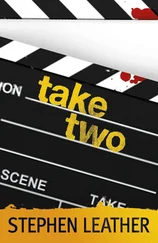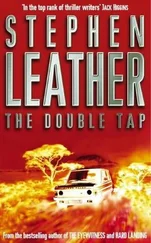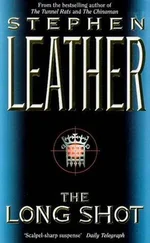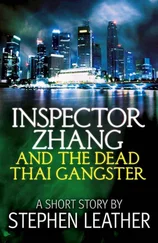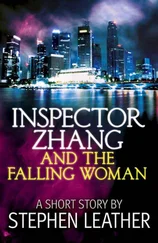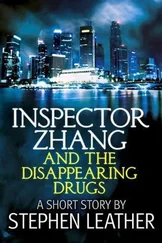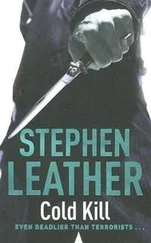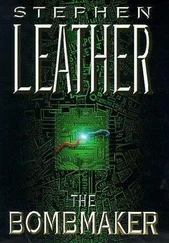Van der Sandt’s gun had twenty-four-inch barrels, shorter than the twenty-six or twenty-eight inches that most hunters went for. The longer the barrels, the less the tendency for them to rise up after firing, but the shorter barrels were easier to manoeuvre through thick bush. Van der Sandt’s gun had a V-type open rear sight with twenty-four-carat gold inlay. Some hunters used telescopic sights but Van der Sandt was also contemptuous of that – if you were so far away that you needed a telescopic sight you weren’t really hunting. The whole point was to get up close and personal and to look your quarry in the eye as you pulled the trigger.
Big game animals were only dangerous when they were close up. If an elephant was a hundred metres away and it spotted a hunter, it would probably amble off. But if it was just ten metres away, it would throw out its ears and charge. Same with buffaloes, which were actually way more dangerous than elephants. At a hundred metres a buffalo was as docile as a dairy cow, but bump into one in the tall grass and it could be deadly.
Van der Sandt wouldn’t even consider taking a shot at an elephant if he was more than twenty-five metres away. The same went for rhinos. The rhino he had killed the previous day had only been twenty metres away when he had pulled the trigger.
He had a dozen cartridges affixed to his hunting vest. The minimum legal calibre for hunting game in Africa was a .375 belted rimless Nitro Express – also known as the .375 H&H Magnum, manufactured since 1912 by a London gunmaker, Holland & Holland. The bullets ranged from seventeen grams to twenty-three grams. But Van der Sandt’s gun was built to take the much larger .500 Nitro Express, which had a jacketed bullet of thirty-seven grams, almost one and a third ounces of lethal lead. The cartridges cost more than ten dollars each. Van der Sandt had shot with the .500 Nitro Express across Africa and had used it to good effect hunting brown bears and polar bears in the wilds of northern Canada. One of his best hunting trips ever had been the nine hours he had tracked a huge male polar bear across the frozen Arctic Ocean, culminating in a single kill shot to the brain. The Americans had banned the hunting of polar bears for anyone other than Alaskan natives in 1972, but it was still allowed in Canada, and since the Americans had banned the importing of polar bear trophies in 2008, Van der Sandt had to ship his trophy back to his mansion in London. The British had no qualms about big game hunters putting their trophies on show, probably because they were the country that had invented the concept of killing for sport. The same would go for the tusks of the elephant Van der Sandt and Falkner were hunting. The ivory was valuable – it had peaked at more than two thousand dollars a kilo in 2014 but had since fallen back to seven hundred dollars. But even at that price the tusks of a serious bull elephant could be worth more than one hundred and twenty-five thousand dollars. But it wasn’t about the money, it was about the trophy. A way of remembering the kill. Of honouring it.
Falkner bent down and examined the tracks. On his back was a bolt-action Winchester Safari Express chambered for the .375 H&H Magnum. It was a nice gun with a polished walnut stock. Falkner had added a scope because his role was tracking and protection; he had to be able to neutralise any threat at a distance if an attack looked imminent. While it was the elephant they were after, the bush was still home to lions, cheetahs and hippos, any one of which might decide to attack them. The Winchester was almost three pounds lighter than Van der Sandt’s gun, but the small cartridges caused less recoil. It had a five-round magazine which, with one in the chamber, gave Falkner six shots to play with.
Falkner straightened up. ‘We’re close,’ he said.
Van der Sandt flashed him a tight smile. To their left was a dried-up creek and beyond it a sandstone rock on which were sitting three female lions. The male was probably sitting in the shade somewhere. Van der Sandt wiped his forehead with his sleeve as he stared back at the lions. He had killed more than a dozen over the years, all males, but there was little sport in killing a lion. Lions were light-boned and soft-skinned and you could pretty much hit them anywhere and bring them down. Elephants and rhinos, and even buffalo, were much harder to kill and required a more advanced skill set. One of the lionesses yawned as if showing contempt and he smiled and raised his gun. He aimed at her and mimed pulling the trigger. ‘Bang,’ he said. She yawned again, and then studiously licked her paw.
Falkner was already walking away and Van der Sandt hurried after him. They spotted a leopard in the distance, sitting on a low branch of a baobab tree, difficult to see against the pinkish-grey bark. Usually at this time of the year the tree would be covered with large white flowers, but like all the vegetation it was suffering from the lack of water.
Falkner held up his hand in a clenched fist and Van der Sandt stopped. The guide pointed off to the right. ‘A couple of hundred metres,’ whispered the guide, taking his rifle off his back. ‘If you listen really hard you can hear them feeding.’
Van der Sandt cocked his head on one side and concentrated. Off in the distance he could hear a whispered rustle. Falkner started walking again, toes first and then the heel, his boots crunching softly on the spiky undergrowth. Van der Sandt followed. They moved through a patch of brambles that tugged at their boots and socks, then across a dried-up creek. As they reached the top of the bank they saw the herd, standing in a thicket of shrubs. The animals were ripping the shrubs apart and shoving the vegetation into their mouths with their trunks.
The two juveniles were sticking close to the females. Some distance away was a male but it wasn’t the target; it was only about ten feet tall, still an adolescent, maybe sixteen or seventeen years old.
Baby elephants took milk from their mothers until they were between five and eight years old but were taught how to feed themselves. Usually they took only the softest vegetation but the drought meant there was little of that about and the youngsters were clearly having trouble chewing the dried-up twigs and branches.
The male looked over in their direction and flapped its ears. It was probably due to leave the herd and either fend for itself or join up with a group of other young bulls. Elephant families were matriarchal, led by an older female. She was usually accompanied by her sisters, though sometimes non-related females were allowed into a herd. The males came, mated, and went.
The elephant flapped its ears again, then gathered a clump of sandy soil in its trunk and flicked it towards them. Falkner had his finger on his trigger but the elephant was just posturing – there was no real danger of it attacking. It nodded and snorted and threw several more snoutfuls of soil towards them. The largest female – presumably the matriarch of the herd – looked over at the male, then turned to look at the hunters. She tilted her head on one side, trumpeted, and then went back to helping one of the juveniles rip apart a shrub.
Van der Sandt stood next to Falkner. The two men looked around, trying to locate the trophy bull. Van der Sandt knew that he would be close by.
They heard a branch cracking off to the right and then they saw it. Van der Sandt grinned. It was huge – one of the biggest elephants he had ever seen. It would certainly be the largest he had killed. It was close to thirteen feet tall and its tusks must have been at least eight feet long. It was attacking a spreading baobab tree, using its massive tusks to strip away the bark and chewing on it contentedly. Elephants spent eighteen hours a day feeding, and during that time a fully grown animal could put away more than four hundred pounds of vegetation. Despite being herbivores, elephants weren’t able to digest cellulose so most of what they ate passed through undigested. They preferred to graze on brush and grasses, but the drought meant they were in short supply, so these elephants had no choice other than to attack the trees and bushes they found.
Читать дальше

